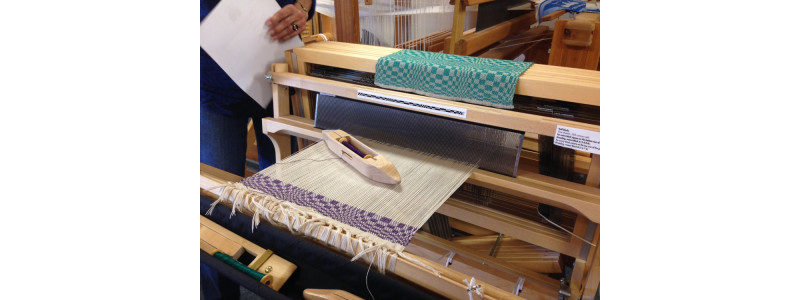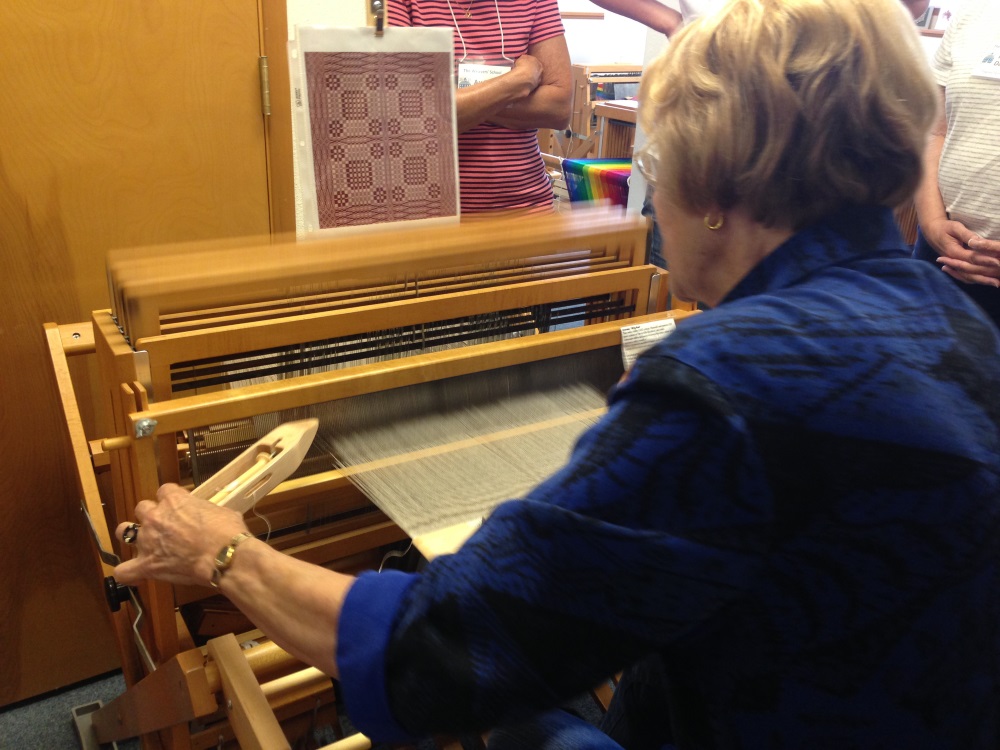Whidbey Weavers School: Day One
- Posted on: 2020-10-04
- |
- Views: 4724
- |
- Category:
- ▸ Weaving

But, unlike with knitting or crocheting, I have been clueless all these years about how to answer their questions, converse on their level, or how to get excited about their project right along with them. So when I found out about this week-long intensive course from a customer who came into the shop this spring, having just returned from the week up on Whidbey herself, I knew that was the answer.
What I had not come into the class expecting was that I’d be one of the only true newbies in the class! I’m so glad I was, too, because it meant the pace of the class was exactly what I wanted. Even if I’m a total, total beginner, I have no patience for learning things in their natural order, so when Madelyn paused her first demonstration at one of the looms and turned to me and said, “Don’t worry, this shouldn’t make any sense yet. Just keep it in your mind and eventually it will,” I knew exactly what she meant. It’s like when I was a little kid, my friends would ask me to teach them how to play a board game like (my favorite) Hi Ho Cherry O, and I would just casually tell them, “Let’s just play. You’ll figure it out as we go along.” Ha!

Later that day, we learned how to wind a bobbin. I had no idea what function a bobbin might serve, but later that afternoon when we actually got to weaving, I knew exactly what to do when I ran out of yarn!

They made us lunch on the first day, knowing that everyone would be coming from some distant form of travel. Adorable!

Here’s what I realized as soon as I sat down at my very first loom: Everything about weaving reminds me of something else from another part of my life.

The way that each set of treadles that you push with your feet will pull up a different combination of shafts reminds me of playing a chord on a grand piano.

The 2-line pattern that I read to make my very first sample (blue one below) reads like a fair isle chart in knitting (right-to-left, with every square representing a stitch — or in this case, a set of “stitches”).

When I was little, my parents used to keep me occupied by buying me workbooks, full of number games and puzzles and codes. They were all entertaining enough, but my favorite ones were these — they were just so satisfying. I’d trudge through all the word finds and anagrams until the rare number code puzzle would pop up, like the elusive rye crisps in your Chex Mix. And while reading the pattern for this sample felt similar enough to a knitting chart, the fact that you have to know the special code that every block represents in order to press the treadles in the right order and make the design appear felt…extremely familiar.

And though I’d stopped playing piano by the time I was 10, sitting down at the bench with this in front of me felt pretty familiar too.

In my twenties, I spent six years making extra money by transcribing everything from outdoorsman TV shows to prison phone calls, and in fact, this moonlighting gig is what I owe my first year at Yarnia to, knowing that I could take the ridiculous leap of opening a store even without the promise of immediate income. I’ve always been a lightning fast typist, but the year I upgraded and sprung for a foot pedal, that’s when it really became worth my while. So the simultaneity of throwing the shuttle with my hands, while echoing the rhythm of the pattern in my head, and executing the code with my feet, also felt more natural than I would have ever expected.

Oh, and obviously, I have a soft spot for large-scale industrial textile production. I couldn’t help but text my mom to tell her that “this is like summer camp meets Norma Rae!”

That’s pretty much how I’m feeling about weaving on day one.



